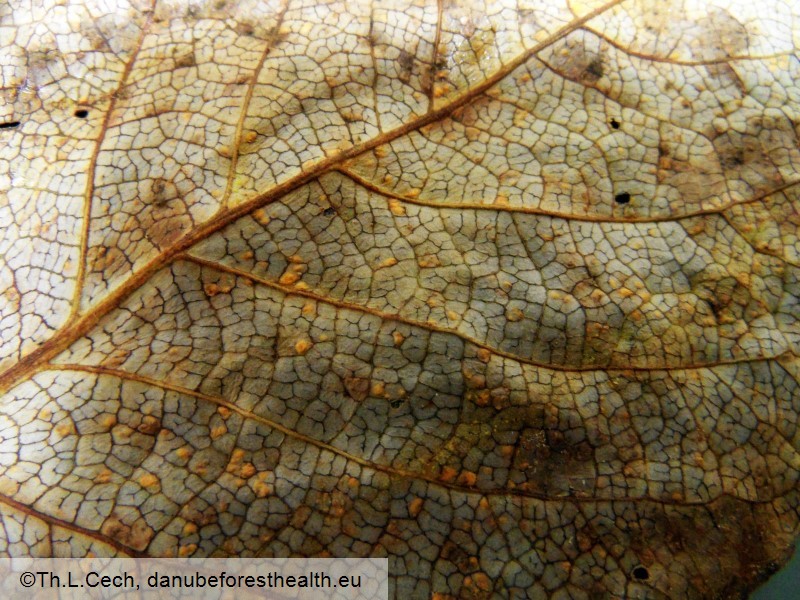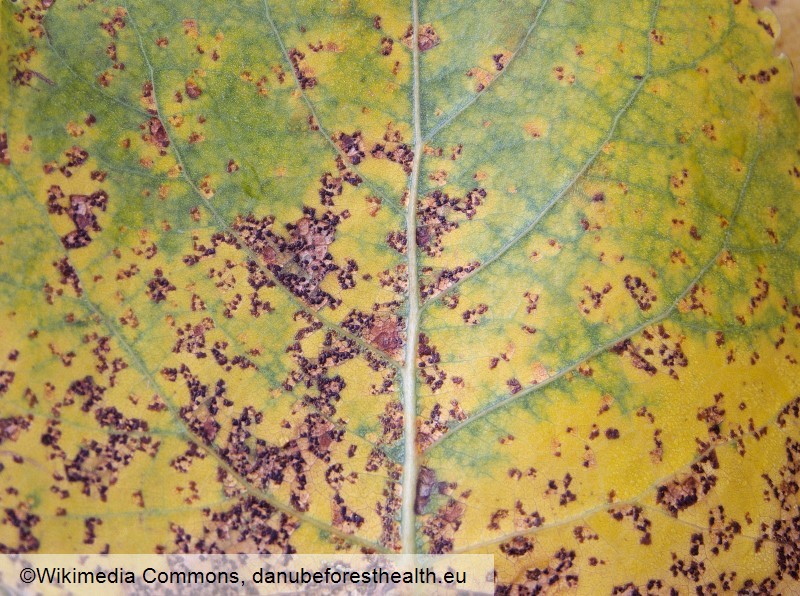Fungi
Melampsora - rusts of poplars
Melampsora spp.
Thomas Cech
|
|

Fig. 1. Melampsora sp., uredinia on the lower leaf-surface.

Fig. 2. Melampsora larici-populina telia on the lower leaf surface
DETECTION PERIOD:
spring to autumn
DESCRIPTION:
Melampsora-species are recognized mainly by a bright orange-yellow dusty coating on the lower leaf-surface in summer on poplar leaves: these are the spores of the haploid stage of the fungus, the uredo-form. At first, rather angular yellow spots of irregular outline and size develop on the upper surface of the poplar leaves. These spots may turn brownish and blackish-grey during the summer. Some time later, round pustule-shaped uredinia (uredospores producing fungal tissues) are formed on the undersides of the leaves (hand-lens!, fig.1). On these, uredospores are produced in high numbers subsequently covering the whole leaf-surface. These spores can quickly infect further leaves of poplar. In autumn, the uredinia are replaced by minute dark pustules, the telia (Fig. 2). They contain teliospores, which hibernate on the fallen leaves in the litter. In the following spring, the teliospores germinate to produce wind-spread basidiospores, which infect the alternate host (depending on the rust-species herbaceous plant- and woody species). The spore types developed on these hosts then infect the young poplar leaves.
HABITAT:
On poplars of all ages in natural and urban habitats.
STATUS:
Widespread in Europe and other continents; very common in the Danube area.
IMPACT:
Poplar rusts are able to cause premature loss of leaves, when they spread explosively in summer by their uredospores. Though there is usually no serious damage, a total defoliation can predispose the poplars to other damaging agents. Poplar clones used for afforestation are meanwhile usually more or less resistant to these rusts. One of the species, M. medusae, of North American origin, has a quarantine-status in Europe, since it is known there from a few countries only. It cannot be distinguished from the European Melampsora species in the field.
SIMILAR SPECIES:
None, if the yellow-orange uredinia are present. Otherwise at most Marssonina-diseases of poplars.
|